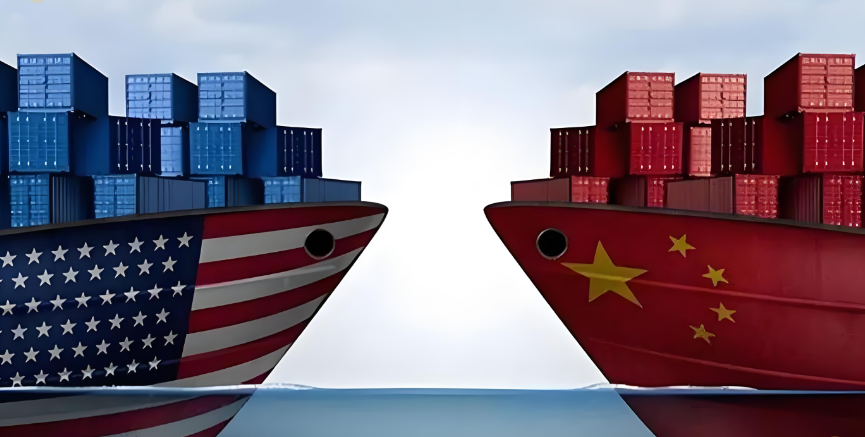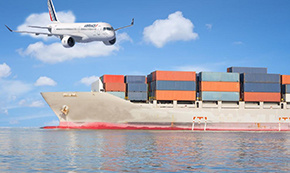All categories >
Export to the United States must know the key points of operation: compliance, logistics and risk prevention.
Categories:
Solution
Time of issue:
2024-10-25 17:46
Views:
The following is a summary of the operating points of exports to the United States:
1. product compliance
Quality Standards and Certification:
Ensure that products meet the quality standards of the United States. Different product categories may have specific standards, such as electronic products to meet the Federal Communications Commission (FCC) certification requirements to ensure electromagnetic compatibility, etc.; food and drugs to meet the United States Food and Drug Administration (FDA) strict standards.
For children's products such as toys, it may be necessary to meet the safety standards of the US Consumer Product Safety Commission (CPSC), including no hazardous substances, mechanical safety, etc.
Labeling and Packaging Requirements:
The product label should be in English, clearly marked with the product name, ingredients, use method, production date, shelf life, manufacturer information, etc. For example, food labels must list allergen information in detail to protect the health and safety of consumers.
Packaging should be strong and comply with shipping requirements, while taking into account U.S. environmental regulations and avoiding the use of excessive packaging or non-recyclable materials. For fragile products, proper packaging and labeling should be carried out to reduce the risk of damage during transportation.

2. Trade Document Preparation
Commercial Invoice:
Fill in the commercial invoice accurately and in detail, including the name, address, contact information of the seller and the buyer, description, quantity, unit price, total price of the goods, terms of trade (such as FOB, CIF, etc.), as well as the mode of transportation and destination. The invoice shall be in English and stamped with the official seal of the Company.
The commercial invoice is one of the important documents for the customs clearance of goods in the United States, and its contents must be consistent with the actual goods, otherwise it may lead to delays in customs clearance or be punished by the customs.
Packing list:
Provide a detailed packing list, listing the contents, quantity, weight, size and other information of each box of goods. The packing list helps U.S. Customs and logistics parties quickly understand the specific conditions of the goods and facilitate the inspection and transportation of the goods.
Packing lists should be consistent with commercial invoices and actual goods to ensure the accuracy and completeness of information.
Transport Documents:
According to the mode of transport to prepare the appropriate transport documents, such as sea bill of lading, air waybill, etc. The bill of lading shall indicate the consignor, consignee, notifying party, port of departure, port of destination, description of goods, mode of transport and other information.
The bill of lading is the proof of ownership of the goods and plays an important role in the process of transportation and delivery of the goods. Ensure that the bill of lading information is accurate to avoid lost or wrong shipment.
3. Logistics and Transportation Options
Mode of transport:
Shipping: suitable for large quantities of goods transportation, the cost is relatively low, but the transportation time is longer. Choose a reliable ocean freight forwarder for information on shipping dates, routes and transportation costs. At the same time, attention should be paid to the packaging and reinforcement of sea freight to prevent damage to the goods during sea transportation.
Air transport: fast transportation, suitable for emergency cargo or high value cargo. However, the cost of air transportation is higher and there are certain restrictions on the size and weight of the goods. Choose an experienced air freight forwarder to ensure that the goods can reach their destination on time.
Express: For small quantities of goods or samples, you can chooseinternational express service, such as DHL, UPS, FedEx, etc. Express service is fast and convenient, but the cost is relatively high.
Freight Forwarder Selection:
Choose qualified and reputablefreight forwarding company. Can be evaluated by querying the freight forwarding company's qualification certificate, customer evaluation, industry reputation, etc.
Sign a clear contract of carriage with the freight forwarding company to clarify the rights and obligations of both parties, including transportation costs, transportation time, cargo insurance, division of responsibilities, etc. To ensure that the freight forwarding company can provide timely and accurate logistics information and high-quality customer service.
4. customs clearance process
Early declaration:
In the United States, goods can be declared in advance. Early declaration can speed up customs clearance and reduce the time for goods to stay at the port or airport. According to the mode of transport and arrival time of the goods, reasonable arrangements for the declaration of time to ensure that the goods can be cleared in a timely manner.
Provide accurate and complete declaration information, including description, value, quantity, country of origin, etc. If the declared information is incomplete or inaccurate, it may result in delays in customs clearance or inspection by customs.
Duties and Taxes Payment:
Understand the tariff policy and rates of the United States, and calculate the duties and taxes that may be paid based on the type and value of the goods. Information can be obtained through the official website of the United States Customs or through a professional customs agent.
Pay duties and taxes on time to avoid goods being detained or late fees due to arrears. You can choose to entrust customs broker or freight forwarding company to pay taxes and fees on behalf of, to ensure the timeliness and accuracy of payment.
Customs Inspection:
U.S. Customs may inspect certain shipments to ensure compliance and security. If the goods are selected for inspection, they should actively cooperate with the work of the customs and provide the required documents and information.
Make preparations for the inspection of the goods to ensure that the packaging of the goods is intact, the labels are clear and the documents are complete. If the goods found problems in the inspection process, to communicate with the customs in a timely manner, take appropriate measures to rectify.
5. trade risk prevention
credit risk:
A credit assessment of U.S. customers to understand their creditworthiness and ability to pay. Evaluations can be made by querying credit reports, referring to industry reviews, and communicating with other suppliers.
Choose safe payment methods, such as letters of credit, prepayments, etc., to reduce credit risk. For new customers or customers with uncertain credit status, consider requiring a partial advance payment or using a letter of credit to ensure the security of the payment.
Legal risk:
Understand U.S. trade laws and regulations, including customs regulations, intellectual property protection laws, consumer protection laws, etc. Ensure that export operations comply with U.S. legal requirements and avoid legal risks arising from violations of the law.
Sign a clear trade contract to clarify the rights and obligations of both parties, including the quality standards of the goods, delivery time, payment methods, liability for breach of contract, etc. The Contract shall be in English and shall comply with the laws of the United States.
Market Risk:
Pay attention to the dynamics and changes of the US market, understand the market demand, competition situation, policy adjustment and other information. Adjust the export strategy in time according to the market changes, improve the competitiveness of products and market adaptability.
Establish a risk management mechanism to assess and warn of possible market risks. Market risk can be reduced by buying trade insurance, diversifying the market and optimizing product mix.
In short, exporting to the United States requires attention to operational points such as product compliance, trade document preparation, logistics and transportation options, customs clearance processes, and trade risk prevention. Only with adequate preparation and planning can we ensure the smooth progress of export business.
Keywords:










